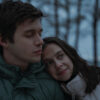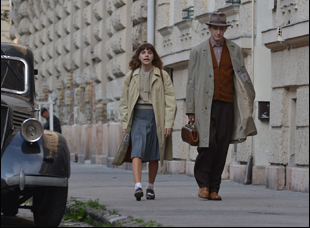It isn’t uncommon for Klára (Abigél Szõke) to insist on the real thing in “Those Who Remained,” tired of tea with lemon substitute or other concessions to the limited supplies available in Hungary after the devastation of World War II. A headstrong teenager in 1948, the desperation to reclaim an authentic experience at a time when everything from her early life is gone outweighs the necessity of actually carrying out the daily routines needed to move forward in life and survive, something that the 42-year-old doctor Aladar (Károly Hajduk), who has taken her in, has uneasily made peace with.
If cinema has come to act as a living memory of the atrocities of the Holocaust, Barnabás Tóth’s compelling second feature addresses a blind spot, illustrating the experience of the few who evaded the Nazi occupation and having no other choice but to restart their lives in the same place where they had seen so much tragedy, where turning a street corner brings fresh pain and the once bountiful lives they led have literally been reduced to rubble. While Klára and Aladar are forced to try to replicate their pre-war lives as best they can through often superficial means, the tender drama shows how a real relationship develops between the two, fulfilling each other’s emotional needs for companionship, though their age difference becomes a source of tension when those on the outside looking in believe it might be inappropriate.
As it turns out, making do with limited resources was both the story on screen and off for Toth, who had just 19 days of shooting to pull off the impressive period piece, wisely centering the film in Aladar’s humble apartment where the clever use of evocative lighting and detailed production design underscore the chrysalis the characters find themselves in when the past continues to have such a tight grip on them and they gradually create the space to be able to move on. The film deservedly was recognized as Hungary’s official entry for Best International Feature at the Academy Awards and was recently shortlisted as one of the 10 finalists, and with “Those Who Remained” headed to the Palm Springs Film Festival this weekend in advance of a broader theatrical release later this year, Tóth spoke about what drew him to the story and how he found such strong actors to play Klára and Aladar, as well as how he realized what the film could depict concerning trauma could be timeless.
I knew [Zsuzsa Várkonyi], the lady who first who wrote it. She’s a psychologist and we worked together in a theater project and one day she told me she wrote a novel years ago, so I was curious and I took it home and i immediately thought it would be a great movie because of the characters and that complex relationship between them. I also didn’t want to make another Holocaust movie [because] you see so many times the trains, the camps, and all those destroyed people. I wanted to focus on the present and the future, about the healing process, and the power of love and the rich and complex emotions the main characters feel towards each other, so I wanted this to be delicate and I tried to focus on the positive things – even in the flashbacks, I wanted to make family moments [that were] very tender and gentle.
Did the novel lend itself to a film adaptation?
Every adaptation is a challenge and I don’t think it was more difficult than an average one, but I had to cut out of a lot of pre-story from both characters. You get to know the grandparents of Aladár, the doctor, and the family of Klára and there are flashbacks about the camps and the ghetto in Budapest, so there are a lot of things I didn’t want to see for many reasons. The challenge is how to show that whole family is gone and because we know so much about it, the tattoo is enough [to tell the story of the Holocaust] at a certain point. Also, the timeline of the book is much longer. My film finishes around ’53, the death of Stalin, but the book goes until the late ‘60s, early ‘70s.
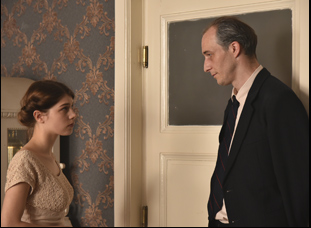
I had a great casting director, Irma Ascher, and she proposed both of them in an early stage, but I really wanted to make sure, especially for the girl because we needed someone who is credible between 16 and 21 because the film story [takes place over five years. It’s hard to find a girl of that age who can play a teenager at the beginning and a young lady at the end, so there were several candidates, and I [narrowed it down] to three of them and then all three, I got to see two potential doctors, so I made them [audition as] couples because I wanted to focus on the chemistry between them – not only the look, but how they react to each other. The actor who plays the doctor, I didn’t work with him before, but I knew his work from the theater and his films, so I was sure he would do it and the main thing was the relationship between them.
Then we had a very intense and long rehearsal process because we knew we had only 19 days to shoot, and there was no time to explain background and emotions on the set, so it was just the three of us [finding] both those characters. For the doctor, we had to slow him down and age him and make him more tired and weak and for the girl, it was the opposite, I had to raise her on edge all the time. Once it was done, we rehearsed all the scenes, and I asked them on the set to be rather slow about everything and keep silences because anything you can speed up easily by cutting out time [once you get back to the editing room], but you cannot make something longer. I didn’t really cut out silences [after though] because their past fills in [with] the looks and the silences.
What went into creating the apartment? That also tells so much about the past.
Yes. I had the great set designer/production designer László Rajk, who was a collaborator of Bela Tarr and also “Son of Saul” [director] Laszlo Nemes. Unfortunately, he passed away this March, so this was his last movie, but he’s a real expert and we worked in a real apartment, but we had to really empty it out and make it new. I didn’t want it to be too ugly because it’s not nice to see something ugly, but I wanted it [to be a place of] solitude, like a lonely man’s apartment and this flat was given to him after the camps [where] some Jewish people [who died] left it there empty and the social workers put him in, so it’s something he inherited and he didn’t put warm things in it, like a wife would, so there’s almost like a military dryness. And then as Klára comes, some things appear, like flowers or she changes the cup of tea, so [when she] arrives in his life, it’s like things lighten up.
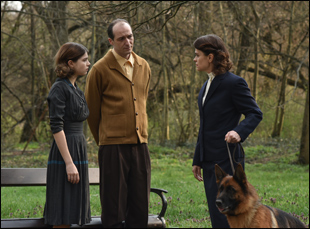
Once again I have to mention a collaborator Gábor Marosi, my DOP and I trusted him on everything. He works a lot for big American productions, so he’s very fast and very effective and he can do a lot with a small amount of lamps that we had. This was a very small budget movie, and he could make day or night just by the switch of the lamps because he [set up] this big black box around the windows [where] he could put lamps, so if he switched off those lamps, it was night. If he switched on, it was day.
And he loves to play on the edge of visibility because he doesn’t like when you give a light on somebody’s face [unnaturally]. In American movies, the eyes are always visible – it’s shiny – even if you’re in a car in the middle of the road at night – you see the face – and he doesn’t like this artificial solution. So he had to find out that only the [ambient] light coming from the street gives some light. [For the apartment at night] Aladár didn’t put anything on the wall because he just didn’t care, but we had to put something and [Gábor] had a huge idea [of this curtain that could reflect this shadow of birds against the wall at night] if he prepared it ahead, and I said ”Wow, that’s great [because the wall is not empty anymore [for the film], but there is still nothing on the wall [staying true to Aladár’s character].
Because you mentioned needing an actress that could play 15 to 21, was it difficult showing time passing in a subtle way in the film?
Yes, I had a great beauty team and we had long beauty rehearsals and makeup tests because first I had to make her sick like darkened eyes and the mouth dry and the fingernails bitten, so I had to make her sick looking and then later on, she gets rounder and more feminine looking and at the end it’s like a young woman. Fashion really didn’t change over those five years, but at the end it is like American movies in the ‘40s, which would mean [it’s actually] in the early ‘50s [since those styles] would come delayed to Hungary, so [we created] a time scale and every scene was numbered and it was written each stage Klára was in. There were several stages, so on the set, when we changed the scene, immediately they started to work because on the same day, we had to jump from the beginning to the end of the movie, so the hair and makeup [team] did an extra good job, I believe.
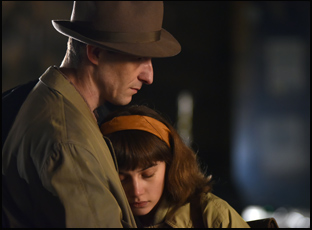
It’s actually very exciting and very inspiring because suddenly when they are in these costumes and in these rooms, you feel like you want to start filming because it looks like a movie, so it gave me a taste to make more period movies. The hard thing was the exteriors – to find streets which still have these square shaped stones and the buildings around. It’s almost impossible to make it in Budapest without intervention, so that was the harder part.
It’s already opened in Hungary. What has it been like seeing the reaction to it?
[I’m in] Cairo, [which] is really amazing because I was a bit afraid – it’s only Arabs and it’s this Jewish drama, I don’t know what would it give. But surprisingly, it was almost full and many young girls came and they all stayed and there was an intensive Q & A and they just loved it. And worldwide, I went to Busan festival, and to the States, so I can tell that it touches people. They take it as a universal story about trauma. In Telluride, there was a soldier who came to me after the screening. He served nine years in Iraq and he said that his soul was destroyed there and he came back home completely devastated, but this film was like a pill for his pain. He told me that was just what he needed now, so for any kind of post-trauma, maybe this story can help.“Those Who Remained” will screen at the Palm Springs Film Festival at the Camelot Theaters on January 4th at noon and January 9th at 6:45 pm and at Palm Springs High School at January 10th at 10 am.


